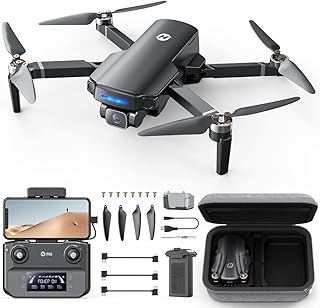Drones in Agriculture: A Technological Revolution in Farming?
The use of drones in agriculture is rapidly gaining traction, promising a significant revolution in farming practices. While it's not a complete overhaul, drone technology offers a range of benefits that can significantly enhance efficiency, productivity, and sustainability.
Here's why drones are being hailed as a game-changer in agriculture:
1. Enhanced Efficiency and Productivity:
* Precision Spraying: Drones equipped with precise spray systems can target specific areas, minimizing chemical usage and maximizing its effectiveness. This leads to reduced costs, environmental impact, and increased yields.
* Data Collection: Drones equipped with sensors can collect aerial imagery and data on crop health, soil conditions, and water stress. This data empowers farmers to make informed decisions regarding fertilization, irrigation, and pest control.
* Timely Intervention: Drones can quickly assess large areas, allowing for early detection of diseases, pests, or other issues. This enables timely intervention and prevents widespread damage.
* Reduced Labor Costs: Drones can automate tasks like spraying and scouting, reducing the need for manual labor and freeing up farmers' time for other tasks.
2. Improved Sustainability:
* Minimized Chemical Usage: Precision spraying with drones reduces chemical usage, leading to less environmental pollution and a decrease in the development of pesticide resistance.
* Optimized Water Usage: Data collected by drones helps farmers understand water needs, enabling them to optimize irrigation practices and conserve water resources.
* Reduced Soil Compaction: By eliminating the need for heavy machinery, drones minimize soil compaction, improving soil health and increasing its fertility.
3. Cost Savings:
* Reduced Labor Costs: As mentioned above, drones can automate many labor-intensive tasks, leading to significant cost savings.
* Increased Yields: By optimizing farming practices, drones contribute to higher yields, boosting profitability.
* Improved Efficiency: Drones expedite processes like spraying and data collection, allowing farmers to complete tasks faster and maximize their time.
Challenges and Considerations:
Despite the numerous advantages, drone adoption in agriculture faces some challenges:
* Regulatory Framework: The use of drones for agricultural purposes requires clear regulations to ensure safety and privacy.
* Technology and Infrastructure: Advancements in battery life, payload capacity, and data processing are still required to fully realize the potential of drones in agriculture.
* Cost of Adoption: Initial investment in drones and associated technology can be a barrier for some farmers.
* Skillset and Training: Farmers need to be trained on how to operate drones and interpret the data they collect.
Future of Drones in Agriculture:
The future of drones in agriculture is bright, with ongoing research and development leading to even more advanced capabilities. We can expect advancements in:
* Autonomous Flight: Increased automation and AI integration will enable drones to perform tasks with minimal human intervention.
* Data Analytics: Advanced algorithms will analyze data collected by drones to provide even more insightful recommendations to farmers.
* Integration with Other Technologies: Drones will be integrated with other technologies like precision farming systems and agricultural robots for a more holistic approach to farm management.
Conclusion:
Drones have the potential to revolutionize agricultural practices, improving efficiency, sustainability, and profitability. By addressing the challenges and fostering continued innovation, drones can play a crucial role in ensuring food security and promoting sustainable farming practices in the future.


